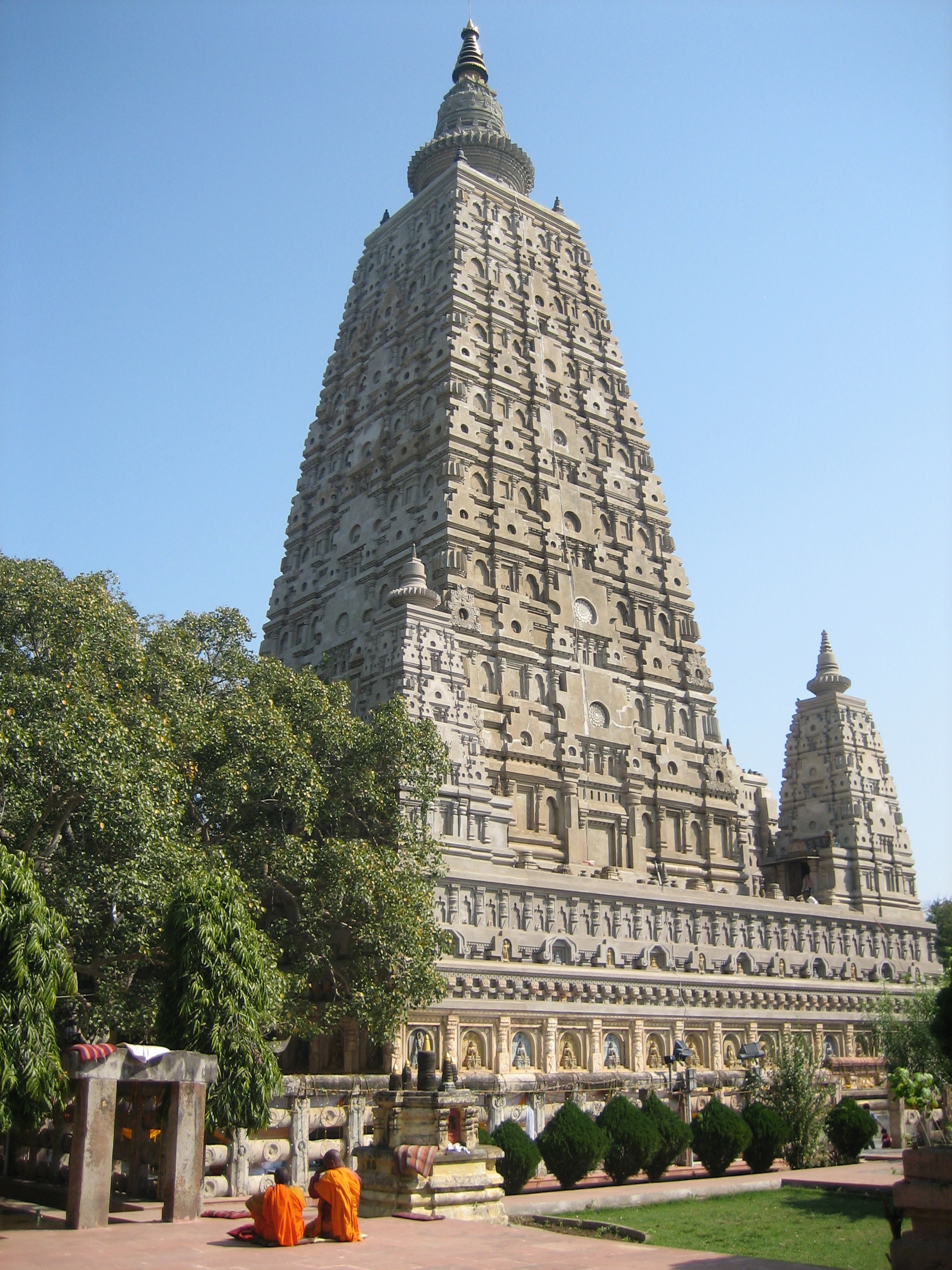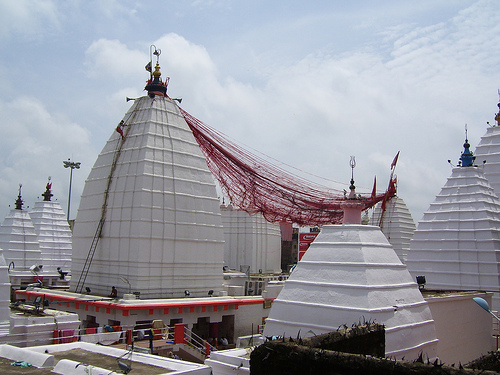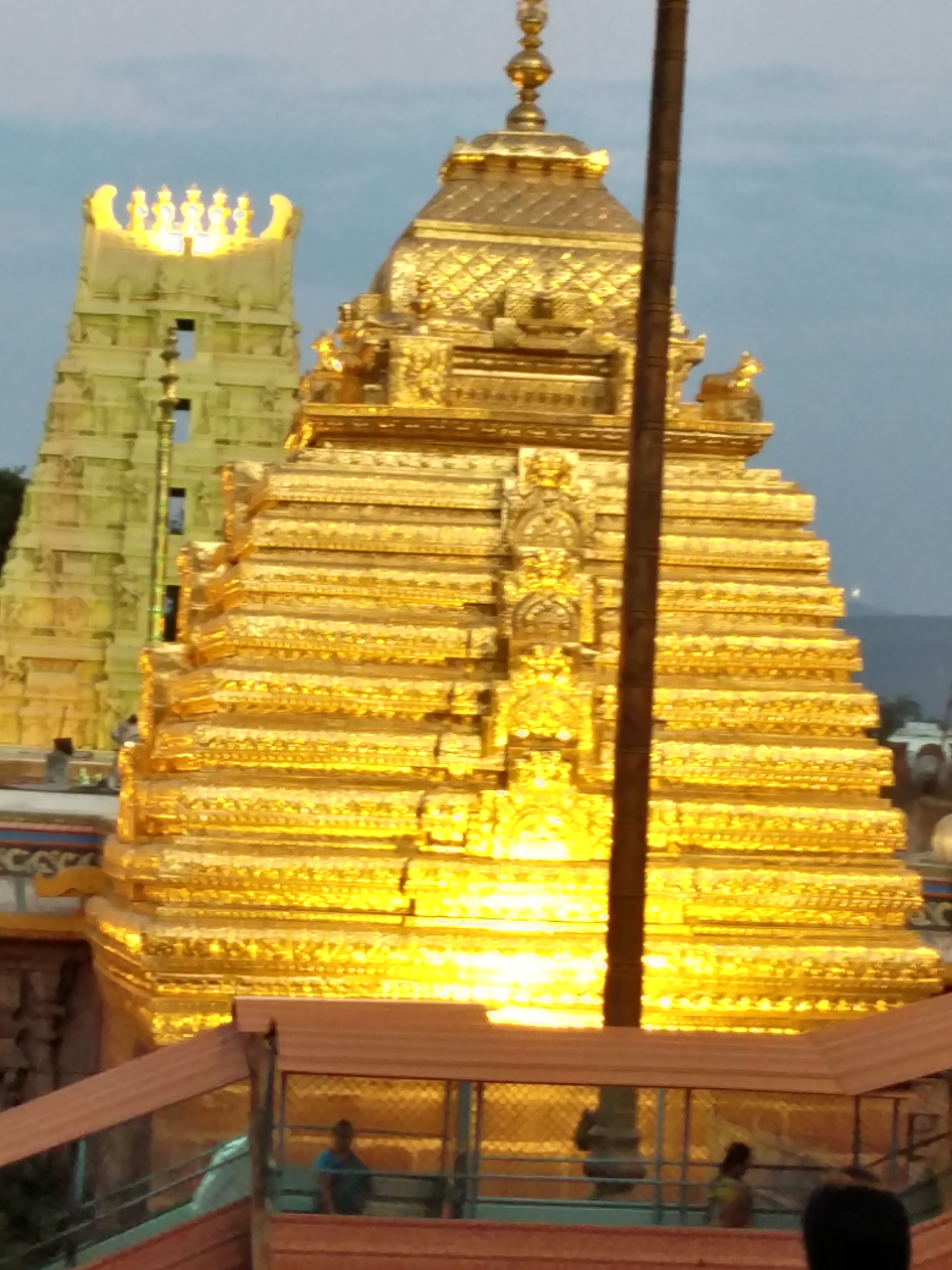|
Shravani Mela
Shravani Mela is a month-long Hindu festival observed in the month of Shravan (July–August) at the Baba Baidyanath Dham temple in Deoghar, Jharkhand, India. This festival is one of the largest religious gatherings in India, attracting millions of devotees, primarily the Kanwariyas, who undertake a pilgrimage to offer holy water from the Ganges to Lord Shiva. Significance Shravani Mela is dedicated to Lord Shiva and is considered highly auspicious. The pilgrimage, also known as the Kanwar Yatra, involves devotees collecting water from the Ganges at Ajgaibinath Dham, Sultanganj and carrying it on foot over a distance of approximately 105 km to the Baba Baidyanath temple in Deoghar. The journey symbolizes devotion, penance, and purification. Rituals * Devotees, known as Kanwariyas, wear saffron-colored clothes and carry the holy water in pots balanced on a decorated bamboo structure called a Kanwar. * The pilgrimage starts from Ajgaibinath Dham, Sultanganj, where the Ganges ... [...More Info...] [...Related Items...] OR: [Wikipedia] [Google] [Baidu] |
Deoghar
Deoghar (pronounced ''Devghar'') is a city and a municipal corporation in Deoghar district in the Indian state of Jharkhand. It is also the administrative headquarters of Deoghar district. It is a holy place of Hinduism. The city is primarily known for Baidyanath Temple, one of the 12 ''Jyotirlinga''s of Shiva, one of the principal deities in Hinduism. The sacred temples of the city make this a place for pilgrimage and tourists. The city is very sacred to the followers of Hinduism. The city is administrative headquarter of Deoghar District which comes under Santhal Parganas division of Jharkhand. It is the fifth largest city in Jharkhand and also known as the cultural capital of Jharkhand. Geography Location Deoghar is located at . It has an average elevation of 255 metres (833 feet). It is a part of the Indian peninsular plateau which forms a part of the oldest landmass on Earth, Gondwana land. Deoghar is situated on the bank of Ajay river (which originates ... [...More Info...] [...Related Items...] OR: [Wikipedia] [Google] [Baidu] |
Devotion
Devotion or Devotions may refer to: Religion * Anglican devotions, private prayers and practices used by Anglican Christians * Buddhist devotion, commitment to religious observance * Catholic devotions, customs, rituals, and practices of worship of God or honour of the saints * Marian devotions, directed to Mary, mother of God Arts and entertainment Film and television * ''Devotion'' (1921 film), an American silent film * ''Devotion'' (1929 film), an Austrian-German silent drama * ''Devotion'' (1931 film), an American drama * ''Devotion'' (1946 film), an American biographical film * ''Devotion'' (1950 film), an Italian film * ''Devotion'' (1954 film), a Soviet film * ''Devotion'' (2022 film), an American biographical war drama film * ''Devotion'' (TV series), a Singaporean TV series * '' Devotion, a Story of Love and Desire'', an Italian TV series * "Devotion" (''Charlie Jade''), an episode of the TV series Gaming * ''Devotion'' (video game), 2019 Literature * ''De ... [...More Info...] [...Related Items...] OR: [Wikipedia] [Google] [Baidu] |
Religion In Jharkhand
Hinduism is the majority religion in Jharkhand, followed by nearly 67.83% of total population as of 2011 census. and Christianity being a significant minority, followed by 4.3%. A small numbers of Sikhs and other religion are also present. Overview Jharkhand is a diverse state of India and has a diverse religious population, where the majority of the population follow Hinduism, with Islam as the second most followed religion. The state has also a very high proportion of tribal population, where the majority religion is Sarnaism. In recent times, due to missionary activities, there has been a significant rise of Christianity in Jharkhand which is more than the national average population of Christians in India. A small community of Agrahari Sikh and Jains Jainism ( ), also known as Jain Dharma, is an Indian religion whose three main pillars are nonviolence (), asceticism (), and a rejection of all simplistic and one-sided views of truth and reality (). Jainism ... [...More Info...] [...Related Items...] OR: [Wikipedia] [Google] [Baidu] |
Bihar
Bihar ( ) is a states and union territories of India, state in Eastern India. It is the list of states and union territories of India by population, second largest state by population, the List of states and union territories of India by area, 12th largest by area, and the List of Indian states and union territories by GDP, 14th largest by GDP in 2024. Bihar borders Uttar Pradesh to its west, Nepal to the north, the northern part of West Bengal to the east, and Jharkhand to the south. Bihar is split by the river Ganges, which flows from west to east. On 15 November 2000, a large chunk of southern Bihar was ceded to form the new state of Jharkhand. Around 11.27% of Bihar's population live in urban areas as per a 2020 report. Additionally, almost 58% of Bihari people, Biharis are below the age of 25, giving Bihar the highest proportion of young people of any Indian state. The official language is Hindi, which shares official status alongside that of Urdu. The main native languag ... [...More Info...] [...Related Items...] OR: [Wikipedia] [Google] [Baidu] |
Tourism In Bihar
The state of Bihar () in eastern India, is one of the oldest inhabited places in the world with a history going back 3000 years. The rich culture and heritage of Bihar is evident from the innumerable ancient monuments that are dotted all over the state. Bihar is home to many tourist attractions and is visited by large numbers of tourists from all over the world. Statics Tourism in Bihar on Indian Government'tourism website Around total 6 million tourists visit Bihar every year. Megasthenes (B.C. 350–290 B.C.) visited the region in reign of Chandragupta Maurya. His observations were recorded in ''Indika''. Dionysius was son of Megasthenes, who visited Pataliputra in reign of Ashoka. Hsuan-Tsang and I Ching visited Nalanda to study in the 7th century. This state is the place of Mahavira, the 24th and last Tirthankara, Aryabhata, Great Ashoka, Chanakya, Gautama Buddha, Mahavira, Guru Gobind Singh, Chandragupta Maurya, Vātsyāyana, Sher Shah Suri, Maa Tara Chandi Te ... [...More Info...] [...Related Items...] OR: [Wikipedia] [Google] [Baidu] |
Tourism In Jharkhand
Tourism in Jharkhand refers to tourism in the States and union territories of India, Indian state of Jharkhand. Jharkhand is known for its waterfalls, hills and holy places. Pilgrim places Parasnath, Baidyanath Temple, Baidyanath Dham, Chhinnamasta Temple, Rajrappa, Jagannath Temple, Ranchi, Jagannath Temple and Dewri Temple are major religious places. The Bhadrakali temple in Itkhori Block, Itkhori built in 9th century A.D. The Buddhist stupas of Itkhori goes backs to 200 BC. It is holy place for Hindus, Buddhists and Jains. The Kapilnath Temple built by King Ram Shah (king), Ram Shah in 1643 in another pilgrim place in Jharkhand. The Rankini Temple, Jadugora, Rankini Temple of Jadugora, built in 1947–50, is famous in Jharkhand as well as in Odisha, West Bengal, Bengal and Bihar. Hill Station Netarhat is a hill station in the state. Parasnath is the highest mountain peak in the state of Jharkhand, and is intervisible with Mount Everest over 450 km to the north ... [...More Info...] [...Related Items...] OR: [Wikipedia] [Google] [Baidu] |
Fairs In India
A fair (archaic: faire or fayre) is a gathering of people for a variety of entertainment or commercial activities. Fairs are typically temporary with scheduled times lasting from an afternoon to several weeks. Fairs showcase a wide range of goods, products, and services, and often include competitions, exhibitions, and educational activities. Fairs can be thematic, focusing on specific industries or interests. Types Variations of fairs include: * Art fairs, including art exhibitions and arts festivals * Book Fairs in communities and schools provide an opportunity for readers, writers, publishers to come together and celebrate literature. * County fair (US) or county show (UK), a public agricultural show exhibiting the equipment, animals, sports and recreation associated with agriculture and animal husbandry. * Festival, an event ordinarily coordinated with a theme e.g. music, art, season, tradition, history, ethnicity, religion, or a national holiday. * Health fair, an event ... [...More Info...] [...Related Items...] OR: [Wikipedia] [Google] [Baidu] |
Festivals In Jharkhand
A festival is an event celebrated by a community and centering on some characteristic aspect or aspects of that community and its religion or cultures. It is often marked as a local or national holiday, mela, or eid. A festival constitutes typical cases of glocalization, as well as the high culture-low culture interrelationship. Next to religion and folklore, a significant origin is agricultural. Food is such a vital resource that many festivals are associated with harvest time. Religious commemoration and thanksgiving for good harvests are blended in events that take place in autumn, such as Halloween in the northern hemisphere and Easter in the southern. Festivals often serve to fulfill specific communal purposes, especially in regard to commemoration or thanking to the gods, goddesses or saints: they are called patronal festivals. They may also provide entertainment, which was particularly important to local communities before the advent of mass-produced entertainment. F ... [...More Info...] [...Related Items...] OR: [Wikipedia] [Google] [Baidu] |
Hindu Festivals
Hindus celebrate a significant number of festivals and celebrations, many of which commemorate events from ancient India and often align with seasonal changes. These festivities take place either on a fixed annual date on the solar calendar or on a specific day of the lunisolar calendar. The observance of these festivals often varies by region, with many celebrated predominantly by particular sects or in specific areas of the Indian subcontinent. Terminology Dolu Utsava ''Utsava'' is the Sanskrit word for festivals. The Sanskrit word ''Utsava'' comes from the word ''ut'' meaning "starts" and ''sava,'' which means "change" or "decline". ''Dolu'' means "seasonal colouring". Both the solar and the lunisolar calendars operate based on Dolu Utsava. Observance periods (''tithi'') Hindu calendar dates are usually in accordance with a lunisolar calendar. In Vedic timekeeping, a ''māsa'' is a lunar month, a ''pakṣa'' is a lunar fortnight (two weeks), and a '' tithi'' is a lu ... [...More Info...] [...Related Items...] OR: [Wikipedia] [Google] [Baidu] |
Jyotirlingas
A Jyotirlinga () or Jyotirlingam is a devotional representation of the Hindu god Shiva. The word is a Sanskrit compound of ('radiance') and ('sign'). The Śiva Mahāpurāṇam (also ''Shiva Purana'') mentions 64 original ''jyotirlinga'' shrines in India. Hinduism Legend According to a Shiva legend from the Shiva Purana, once, Brahma (the god of creation) and Vishnu (the god of preservation) had an argument over their supremacy. To settle the debate, Shiva pierced the three worlds, appearing as a huge, infinite pillar of light, the ''jyotirlinga.'' Brahma and Vishnu decided to ascend and descend across a pillar of light respectively, to find the end of the light in either direction. According to some iterations, Vishnu assumed his Varaha avatar to achieve this task, while Brahma rode a hamsa (swan). Brahma lied that he had discovered the end of the light, producing a ketakī flower as proof, while Vishnu admitted that he could not find the end of the light from his j ... [...More Info...] [...Related Items...] OR: [Wikipedia] [Google] [Baidu] |
Bamboo
Bamboos are a diverse group of mostly evergreen perennial plant, perennial flowering plants making up the subfamily (biology), subfamily Bambusoideae of the grass family Poaceae. Giant bamboos are the largest members of the grass family, in the case of ''Dendrocalamus sinicus'' having individual stalks (Culm (botany), culms) reaching a length of , up to in thickness and a weight of up to . The internodes of bamboos can also be of great length. ''Kinabaluchloa, Kinabaluchloa wrayi'' has internodes up to in length. and ''Arthrostylidium schomburgkii'' has internodes up to in length, exceeded in length only by Cyperus papyrus, papyrus. By contrast, the stalks of the tiny bamboo Raddiella, ''Raddiella vanessiae'' of the savannas of French Guiana measure only in length by about in width. The origin of the word "bamboo" is uncertain, but it most likely comes from the Dutch language, Dutch or Portuguese language, Portuguese language, which originally borrowed it from Malay langua ... [...More Info...] [...Related Items...] OR: [Wikipedia] [Google] [Baidu] |







